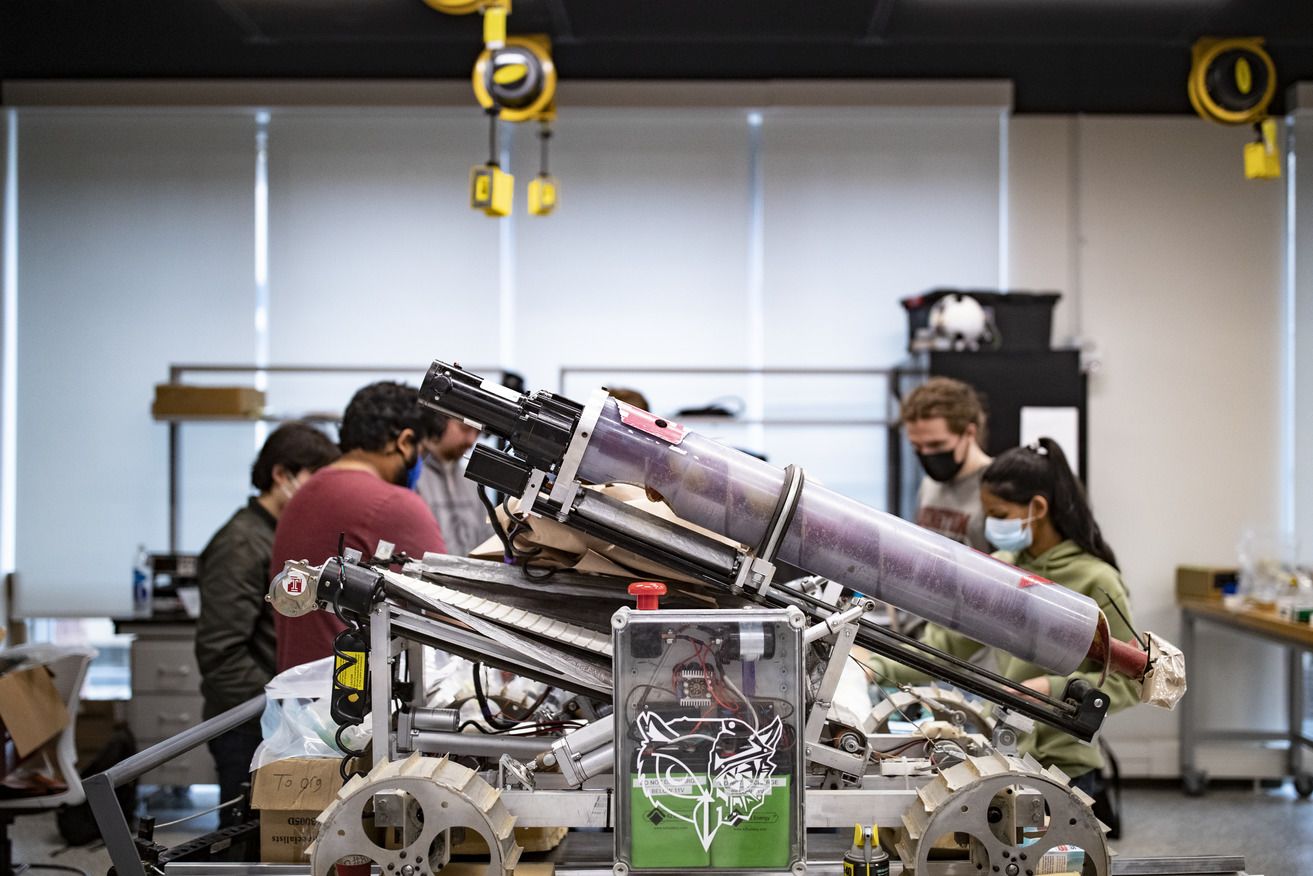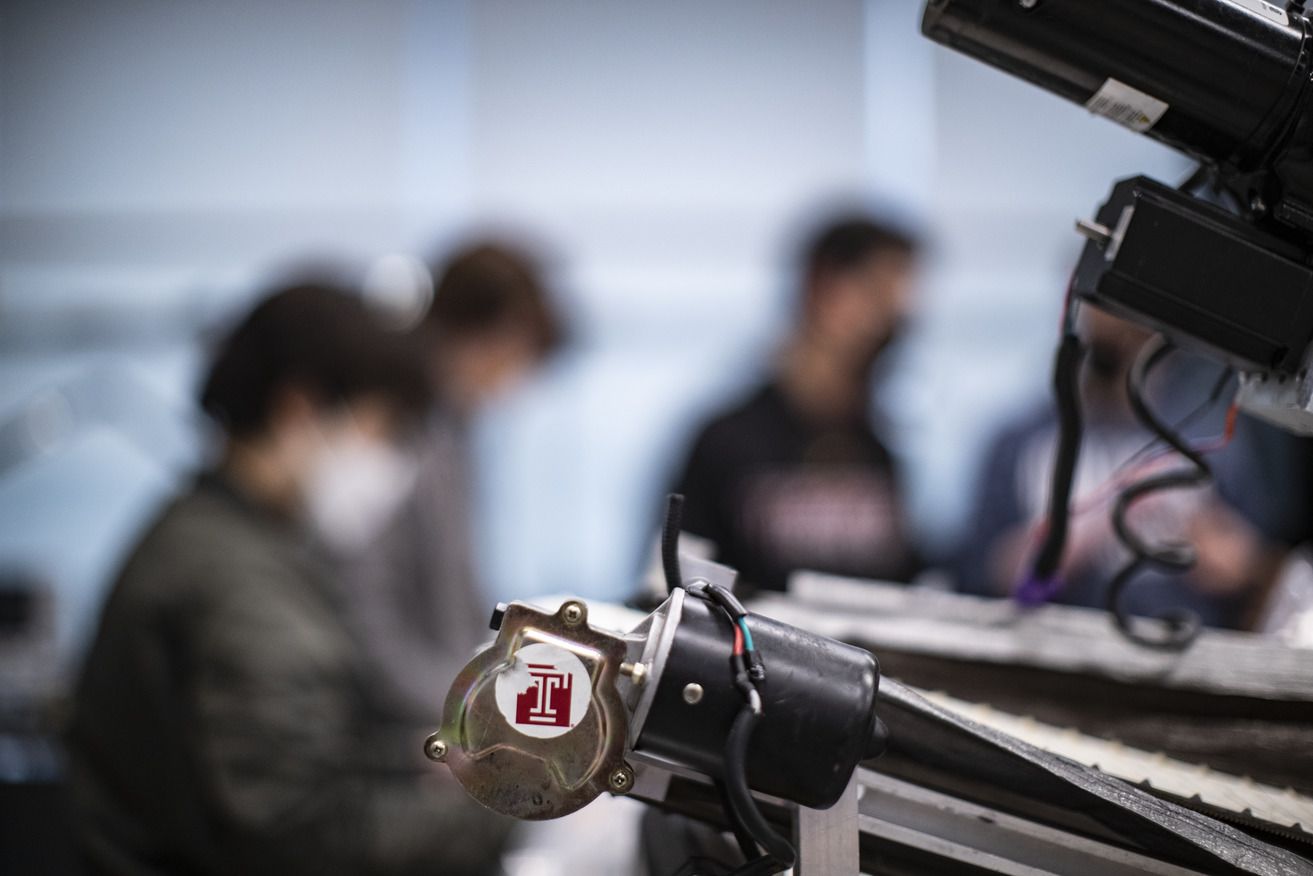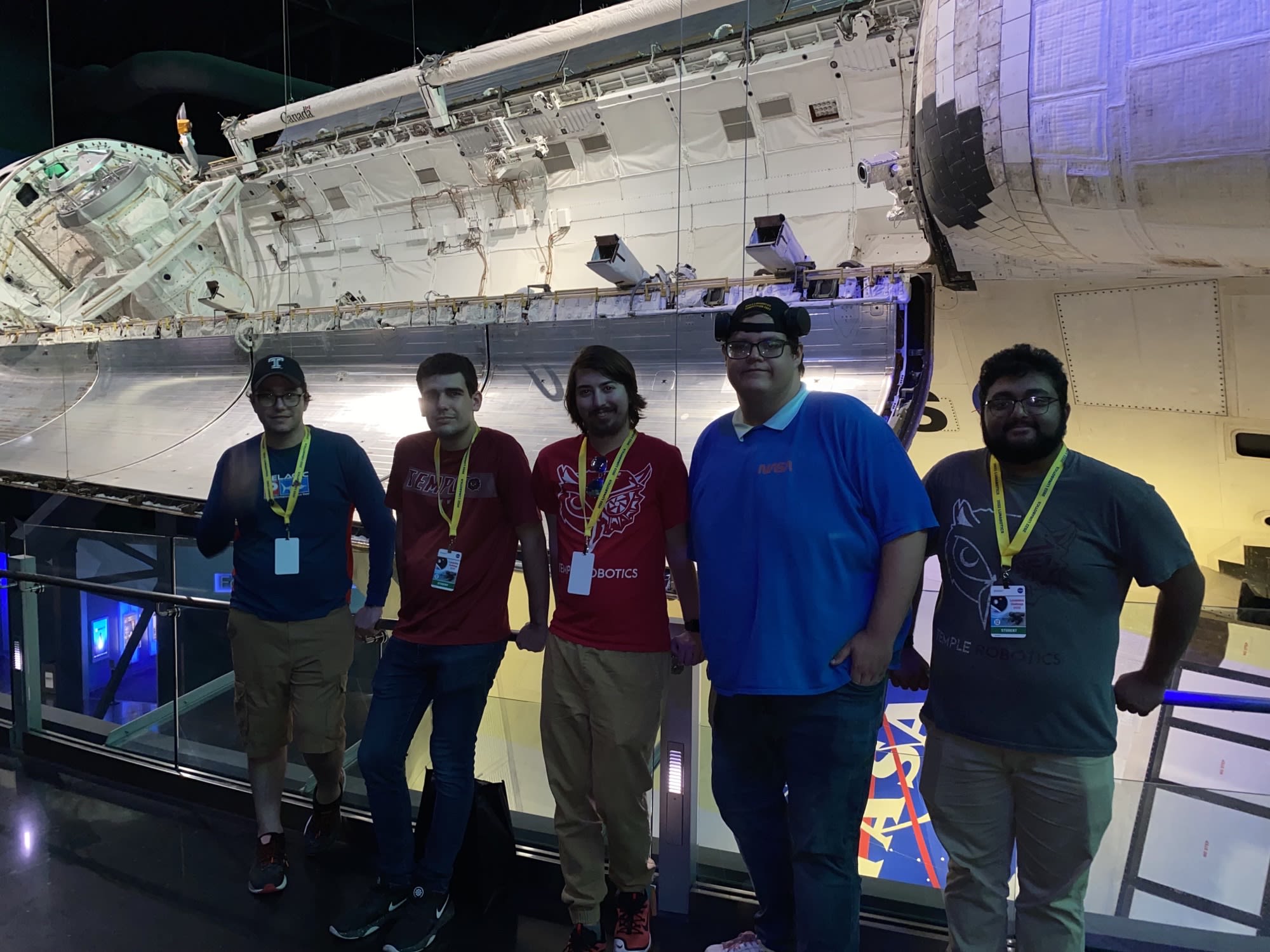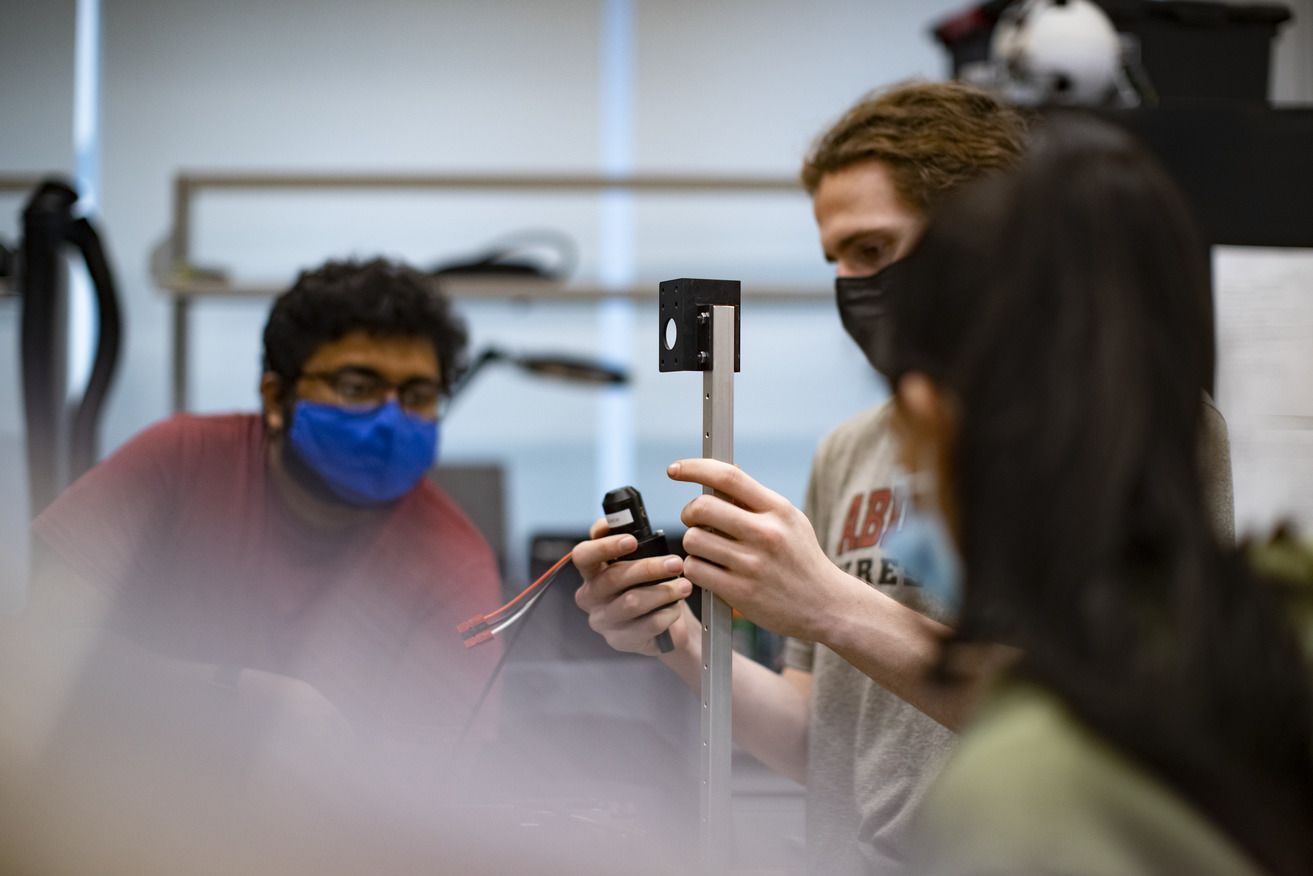Shoot for the stars
Temple Robotics aimed high at 2022 NASA Lunabotics competition

Temple Robotics dug its way to success at the 2022 NASA Lunabotics competition.
The team collected 0.4kg of gravel at Kennedy Space Center this May, securing 35 out of 71 points for their overall score.
The competition challenges collegiate robotics teams to engineer a robot capable of excavating the surface of the moon to collect gravel amongst BP-1, a lunar regolith simulant. Teams that mine at least 1 kg qualify for mining points, but very few teams achieved this.
“Temple did very, very well,” said John Helferty, associate professor of electrical and computer engineering and the team’s advisor. “We mined very well, we got into the top five, but we did not achieve qualification status that NASA required.”
The team responded to this year’s challenge with JARED, Just A Robot Excavating Dirt.
JARED is designed with a bucket-ladder system for mining, which consists of a quickly spinning conveyor belt with attached buckets to collect the gravel.

“In the many years that we've been at the competition, this is probably one of the best designs that I've seen so far,” Helferty said.
The team steered their original robot through two runs in the competition. Although their first run involved a struggle in depositing gravel, it only sparked innovation among the team engineers. To solve a dumping problem, they used practical tools—zip ties—to set up a successful second run.
The second run established Temple Robotics as a major competitor with an impressive collection of 0.4kg of gravel.
With the 2022 competition under its belt, the team looks toward an uncertain future as the competition is rumored to change for 2023. Lunabotics has recently been renamed from NASA Robotics Mining Competition to better encompass NASA’s goals of lunar exploration.
Regardless of the potential changes, the team has a major improvement in mind—automation. Unfortunately, the team was unable to achieve automation this year but is determined to achieve it in the near future.
“At the end of the day, it is more of an automation challenge, not a digging challenge,” said Blake Bray (pictured right), a rising senior electrical engineering major and member of Temple Robotics.
They plan to test next year’s robot in an arena they are constructing at Temple Ambler, which will help further prepare the team for competition.
Still, there is one goal for the coming academic year that would bring positive change to the team. “We want to expand,” said Mark Sitch, an electrical engineering student pursuing his master’s degree and the electrical subteam lead for Temple Robotics.

The team has been rather small since its start. There are around 25 students involved, with half a dozen key members focusing on the competition robot, Sitch said. They spent years working in a small space in Mazur Hall, but will now operate in the center of the IDEAS Hub. Current members are hoping their new location, along with team-made banners and promotions, will create more buzz around the club and draw new members.
“We'll teach anyone engineering if they're interested in learning,” Sitch said.
But there’s room for everyone at Temple Robotics: technical writing, social media management, business, and more are essential parts of the team, Sitch said.
“No matter what major you fall under, we could find something to fit your interests.”
Students can join Temple Robotics by reaching out to the team president David Feil, checking out the team in the IDEAS Hub, or visiting their page on Owl Connect.
